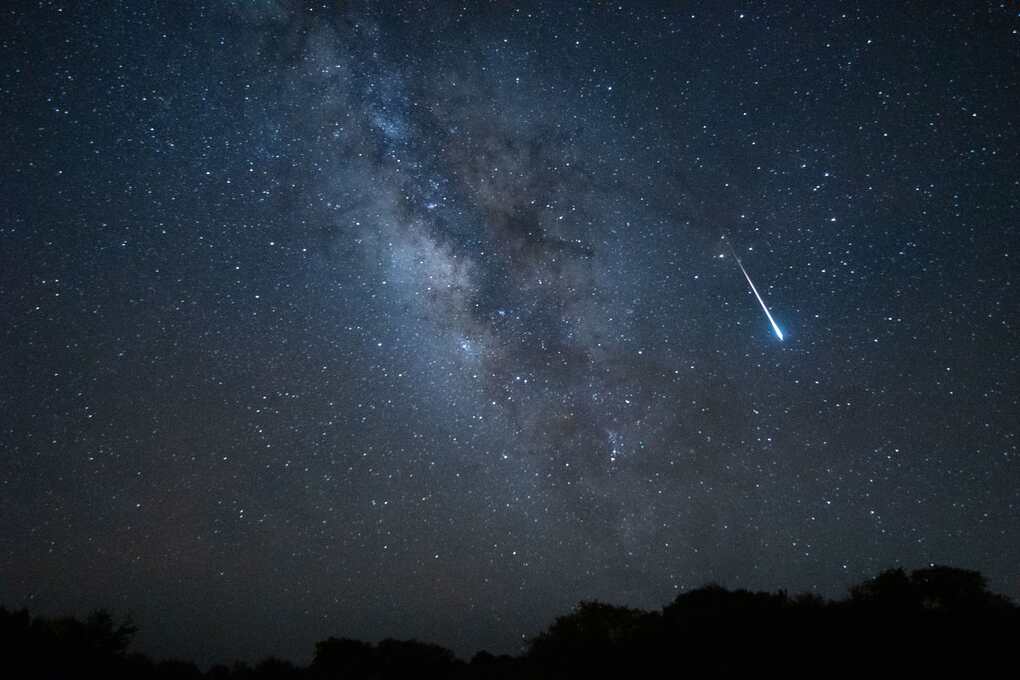

Deep Science
How Scientists Discover Galaxies: A Detective’s Journey Through the Cosmos
![]()
In the vast expanse of the universe, galaxies twinkle like distant cities in a dark and mysterious night. Their secrets have beckoned to scientists for centuries, urging them to unravel the mysteries of these cosmic islands. The quest to discover galaxies is no simple task—it’s a detective story of epic proportions, filled with clues, puzzles, and moments of awe-inspiring revelation. Let us don our detective hats and embark on a journey to uncover how scientists discover galaxies.
The Cosmic Clue: Light as Evidence
Every great detective needs a clue to get started, and in the cosmic detective’s toolkit, light is the most critical piece of evidence. The story begins with the faintest glimmer of light reaching Earth from a distant galaxy. This light, which has traveled across the vast void of space for millions, sometimes billions, of years, carries within it the secrets of the galaxy’s origins, structure, and composition.
Scientists, much like detectives, use telescopes as their magnifying glasses, carefully examining this ancient light. Telescopes have evolved over the centuries, from Galileo’s simple refracting telescope to the powerful Hubble Space Telescope, which has allowed scientists to peer deeper into the universe than ever before.
The Hubble, and now its successor, the James Webb Space Telescope, provide a window into the distant past, capturing images of galaxies as they were billions of years ago. These images are like cosmic fingerprints, each unique and telling its own story. By analyzing the light, scientists can determine the distance, age, and even the chemical makeup of a galaxy, offering clues about its formation and evolution.
Redshift: The Doppler Effect in Space
As our investigation deepens, we encounter a phenomenon known as redshift—a crucial clue in the cosmic detective’s case. Redshift occurs when the light from a galaxy stretches as the galaxy moves away from us, much like the sound of a siren changes pitch as an ambulance speeds past. This stretching shifts the light toward the red end of the spectrum, hence the name “redshift.”
Redshift is more than just a curious effect; it’s a vital piece of evidence that tells us about the universe’s expansion. In the 1920s, the renowned astronomer Edwin Hubble made a groundbreaking discovery: the universe is expanding, and galaxies are moving away from us. The farther away a galaxy is, the faster it appears to be receding.
This discovery was a game-changer in our understanding of the universe. It not only provided proof of the Big Bang theory but also allowed scientists to estimate the distance to far-off galaxies. By measuring the degree of redshift, scientists can determine how fast a galaxy is moving away, and thus, how far it is from Earth. This helps to map the universe and discover new galaxies lurking in the shadows.
The Hubble Deep Field: A Cosmic Crime Scene
One of the most remarkable achievements in the history of galaxy discovery was the creation of the Hubble Deep Field image—a snapshot of a seemingly empty patch of sky that turned out to be a cosmic crime scene filled with galaxies. In 1995, scientists aimed the Hubble Space Telescope at a small, dark region of space near the Big Dipper. The resulting image revealed thousands of galaxies in various stages of evolution, some as old as 13 billion years.
This image was a treasure trove of clues, showing galaxies of all shapes and sizes, from spiral and elliptical galaxies to irregular and peculiar ones. The Hubble Deep Field was a revelation, proving that galaxies are far more numerous than previously thought, and they exist at vast distances from us.
The sheer number of galaxies captured in this image was astonishing. It hinted at the possibility that there could be over 100 billion galaxies in the observable universe. Each galaxy contains billions, if not trillions, of stars, making the cosmos far more populated than anyone had imagined.
Cosmic Archaeology: Studying Ancient Light
As our investigation continues, we delve into the field of cosmic archaeology. Unlike traditional archaeology, where scientists dig into the Earth to uncover ancient artifacts, cosmic archaeologists look deep into space to study the ancient light from distant galaxies. This light, which has taken billions of years to reach us, allows scientists to peer back in time and witness the early stages of the universe.
By studying the oldest galaxies, scientists can piece together the history of the cosmos. These ancient galaxies serve as clues to the conditions of the early universe, offering insights into how galaxies formed and evolved over time. Some galaxies are so distant that they appear as they were when the universe was just a few hundred million years old, providing a glimpse into the universe’s infancy.
The James Webb Space Telescope, launched in 2021, is designed specifically for this type of investigation. It can detect the faint infrared light from the earliest galaxies, allowing scientists to push the boundaries of our knowledge and discover galaxies that were previously hidden from view.
Dark Matter and Dark Energy: The Invisible Suspects
No detective story would be complete without a few mysterious suspects, and in the case of galaxy discovery, those suspects are dark matter and dark energy. These elusive forces make up the majority of the universe’s mass and energy, yet they cannot be seen or directly detected. Their presence is inferred from the behavior of galaxies and the large-scale structure of the universe.
Dark matter, for example, is thought to hold galaxies together. Without it, the stars in a galaxy would fly apart due to their rapid rotation. Scientists have detected the presence of dark matter through its gravitational effects on galaxies, but its true nature remains one of the greatest mysteries in astrophysics.
Dark energy, on the other hand, is believed to be responsible for the accelerated expansion of the universe. Its discovery came as a shock to scientists in the late 1990s, and it continues to baffle researchers. Understanding dark energy could unlock new clues about the fate of the universe and the ultimate destiny of galaxies.
The Future of Galaxy Discovery: New Tools for a New Era
As we near the conclusion of our detective story, we must consider the future of galaxy discovery. New tools and technologies are on the horizon, promising to reveal even more about the cosmos.
The Vera C. Rubin Observatory, set to begin operations in the 2020s, will conduct the Legacy Survey of Space and Time (LSST), capturing the entire visible sky in unprecedented detail. This survey will detect millions of galaxies, providing a more comprehensive map of the universe and offering new opportunities for discovery.
Moreover, advances in machine learning and artificial intelligence are revolutionizing the way scientists analyze data. These tools can sift through vast amounts of information, identifying patterns and uncovering hidden galaxies that might otherwise go unnoticed.
The Final Word: A Never-Ending Investigation
Our investigation into how scientists discover galaxies has taken us from the humble beginnings of telescopic observations to the cutting-edge technologies of today. Along the way, we’ve uncovered the clues that light reveals, the mysteries of redshift, the wonders of cosmic archaeology, and the challenges posed by dark matter and dark energy.
But like any great detective story, the case is never truly closed. The universe is vast and filled with countless galaxies waiting to be discovered. Each new discovery raises more questions, leading scientists to explore deeper, look further, and push the boundaries of our understanding.
So, while we may never find all the answers, the thrill of the chase—the pursuit of knowledge—drives scientists to continue their investigation into the cosmos. And who knows? The next great galaxy discovery could be just around the corner, waiting to be uncovered by the ever-curious minds of those who dare to look up and wonder.
Deep Science
The 10 Craziest Scientific Discoveries You Missed in 2024

![]()
As a seasoned detective, I have seen the bizarre, the unexplainable, and the downright astonishing. But nothing compares to the whirlwind of breakthroughs that 2024 has brought. While the world was busy with its mundane routines, the realm of science delivered a treasure trove of discoveries that many missed. So, let’s put on our detective hats and dive into the ten most mind-bending scientific revelations of the year.
1. Reviving Extinct Species
Imagine the ability to bring back animals that walked this earth centuries ago. It sounds like something out of a science fiction novel, doesn’t it? Well, in 2024, scientists made headlines by reviving an extinct species of bird through a combination of genetic engineering and cloning. Using preserved DNA, researchers managed to recreate the genetic blueprint and implant it into a surrogate species. The result? The resurrection of a bird species thought lost forever.
Now, the ethical implications are profound. Do we have the right to bring back creatures that nature has deemed extinct? What impact could this have on our delicate ecosystems? These questions linger like unsolved mysteries, waiting for us to untangle them.
2. Self-Healing Materials: The Future of Technology
Imagine dropping your phone and watching the screen crack, only for it to heal itself within minutes. 2024 brought us a step closer to this reality with the invention of self-healing materials. Researchers have created polymers capable of repairing damage on their own, without external assistance.
This breakthrough has vast implications, from technology to construction. It’s a detective’s dream—materials that erase all evidence of damage, leaving no trace behind. But while this innovation may make our gadgets more durable, it leaves us pondering how it could impact other fields. Could such materials find their way into criminal investigations, wiping away crucial evidence? Only time will tell.
3. The Mystery of Dark Matter Gets Clearer
Dark matter has been the cosmic detective’s most elusive case for decades. We know it exists; we can feel its gravitational pull shaping galaxies and stars. But we’ve never been able to observe it directly—until now.
In 2024, scientists uncovered new particles that could be the building blocks of dark matter. This finding represents a leap forward in understanding the invisible forces that govern our universe. Still, much remains hidden. The true nature of dark matter is a puzzle waiting to be solved, one that may hold the key to unraveling the mysteries of our universe.
4. Quantum Supremacy Reclaimed
In the ongoing race for quantum computing supremacy, 2024 saw another monumental leap. Google’s latest quantum computer achieved feats that no classical computer could ever dream of, completing calculations in seconds that would take even the most powerful supercomputers centuries.
To a detective, quantum computing is like unlocking a whole new level of investigation. Imagine cracking codes in the blink of an eye, processing unimaginable amounts of data in moments. But with great power comes great responsibility. Quantum computers hold the potential to reshape the world as we know it—for better or for worse.
5. The Breakthrough in Brain-Computer Interfaces
This year saw new advances in brain-computer interfaces (BCIs), taking us one step closer to controlling machines with our thoughts. Scientists developed devices that allowed individuals to interact with computers through neural signals alone, bypassing physical movement altogether.
While this technology offers immense promise, particularly for individuals with disabilities, it also raises ethical questions. What happens when thoughts become commands? As detectives of the future, will we be tasked with solving crimes committed by machines controlled by the mind? The possibilities, both awe-inspiring and concerning, stretch before us.
6. Artificial Photosynthesis: Nature’s Blueprint, Perfected
In 2024, scientists achieved a breakthrough in artificial photosynthesis, a process that could have a profound impact on combating climate change. By improving on nature’s method of converting sunlight into energy, researchers developed a system that captures carbon dioxide and converts it into usable fuels more efficiently than plants.
This discovery could be humanity’s secret weapon in reducing greenhouse gases. But tampering with such fundamental processes of nature could have unforeseen consequences. It’s as if we are rewriting the very code of life, and in doing so, we must be cautious not to unravel its delicate balance.
7. Memory Transfer Between Living Beings
One of the most mind-bending discoveries of 2024 was the successful transfer of memories between organisms. Researchers were able to transfer learned behaviors from one sea slug to another through RNA injections, opening the door to potential breakthroughs in memory and learning in humans.
As a detective, the implications of memory transfer are fascinating. Could we one day extract the memories of a witness or even a criminal? While this technology is still in its infancy, it tantalizes the imagination with the potential to unlock the deepest secrets of the mind.
8. Time Crystals: Breaking the Laws of Physics
Time crystals sound like something from a sci-fi novel, but in 2024, they became a reality. These exotic phases of matter exist in a state of perpetual motion without consuming energy, defying the traditional laws of thermodynamics.
The discovery of time crystals could revolutionize how we understand the nature of time and energy. For detectives of the cosmos, this discovery is akin to finding a clue that completely rewrites the rules of the game. The implications could be far-reaching, potentially altering our very understanding of the universe.
9. CRISPR Goes Beyond Editing
In 2024, CRISPR technology continued to evolve beyond simple genetic editing, with scientists achieving breakthroughs in gene therapy. For the first time, researchers used CRISPR to treat diseases at their genetic root, offering hope for cures to previously untreatable conditions.
Much like a detective meticulously removing a threat from society, CRISPR allows scientists to eliminate harmful mutations from DNA. But this power comes with great responsibility. How far will we go in rewriting the genetic code, and at what cost to our humanity?
10. The Search for Extraterrestrial Life Intensifies
Finally, no list of 2024’s wildest discoveries would be complete without mentioning the ongoing search for extraterrestrial life. This year, scientists detected unusual chemical signatures on distant planets that suggest the potential for life beyond Earth. While we haven’t found definitive proof yet, the clues are mounting.
For those of us who investigate the unknown, the search for alien life represents the ultimate mystery. As we inch closer to answering the age-old question of whether we are alone in the universe, we are reminded that sometimes, the greatest discoveries lie not in solving mysteries, but in embracing them.
Conclusion
2024 brought a tidal wave of scientific discoveries that reshaped the boundaries of possibility. From self-healing materials to quantum supremacy, memory transfer, and time crystals, the year was filled with breakthroughs that could alter the course of history. For detectives like us, these discoveries are more than just headlines—they are the keys to solving the puzzles of tomorrow. As we look to the future, one thing is certain: the world of science is full of mysteries waiting to be unraveled.
Deep Science
Animalistic Behavior in Humans: A Deep Dive

![]()
The dim light of the study flickered, casting long shadows across the room. The silence was only broken by the soft rustling of papers and the occasional creak of the old wooden chair. This was the kind of environment that allowed one to delve deep into the mysteries of human nature—where the lines between civilization and the primal instincts within us blurred.
Our investigation today centers around a peculiar, yet often overlooked phenomenon: animalistic behavior in humans. This concept, though unsettling to some, provides a fascinating glimpse into the raw, unfiltered aspects of human nature that often remain concealed beneath layers of social conditioning and cultural norms.
The Origins of Animalistic Behavior
To understand animalistic behavior in humans, one must first acknowledge our evolutionary roots. As descendants of primates, our genetic makeup carries traces of our ancestors’ survival instincts—traits that were essential for their survival in the wild. These instincts, though subdued by centuries of civilization, still surface under certain circumstances, revealing the primal side of our humanity.
Consider the fight-or-flight response, a classic example of animalistic behavior. When faced with a threat, the human body reacts instinctively—adrenaline surges, the heart races, and the muscles tense, ready to either confront the danger or flee from it. This response is not a product of rational thought but a deeply ingrained survival mechanism inherited from our animal ancestors.
The Shadow of Aggression
Aggression is perhaps the most overt manifestation of animalistic behavior in humans. While society has established rules and laws to curb violent behavior, aggression still lurks beneath the surface, waiting for the right trigger. In moments of extreme stress, anger, or fear, the veneer of civility can crack, revealing the raw, unrestrained aggression that lies within.
One might observe this behavior in various forms, from road rage incidents to violent outbursts during sports events. The competitive nature of these situations can awaken a primitive drive to dominate, to assert one’s superiority—traits that were crucial for survival in the animal kingdom.
Yet, aggression in humans is not purely destructive. It can also be channeled constructively, as seen in the drive to succeed, to overcome challenges, and to protect loved ones. This duality reflects the complex nature of animalistic behavior, where the same instinct can lead to both positive and negative outcomes depending on the context.
Territoriality and Social Hierarchies
Another aspect of animalistic behavior is territoriality—the instinct to defend one’s space or resources from perceived intruders. In the animal world, this behavior is vital for securing food, shelter, and mating opportunities. In humans, territoriality manifests in various forms, from personal space preferences to national borders and property ownership.
Social hierarchies, too, have their roots in our animal ancestry. In many animal species, dominance hierarchies determine access to resources and mates, with the strongest or most dominant individuals occupying the top ranks. Humans, despite our complex social structures, are not immune to these instincts. Whether in the workplace, social circles, or even within families, subtle power dynamics often reflect a hierarchy reminiscent of our primal past.
The Instincts of Survival
Beyond aggression and territoriality, humans exhibit other animalistic behaviors related to survival instincts. Consider the act of hoarding—whether it’s stockpiling food during a crisis or accumulating wealth, the drive to gather and secure resources is deeply rooted in our evolutionary past. This behavior, while seemingly irrational in modern times, can be traced back to the need for survival during periods of scarcity.
Similarly, the instinct to reproduce and ensure the continuation of one’s genetic line is another fundamental aspect of animalistic behavior. This drive influences human behavior in myriad ways, from mate selection to the desire for offspring. While cultural and social factors play a significant role in shaping these behaviors, the underlying instinct remains a powerful force.
The Role of Social Conditioning
While animalistic behavior is an inherent part of human nature, it is important to recognize the role of social conditioning in moderating these instincts. From a young age, humans are taught to suppress or control their primal urges, to adhere to societal norms, and to prioritize rational thought over instinctual reactions.
However, under certain circumstances—such as extreme stress, trauma, or social isolation—these animalistic behaviors can resurface, often with surprising intensity. This phenomenon is evident in situations where individuals are pushed to their limits, such as in survival scenarios or during moments of intense emotional turmoil.
The Thin Line Between Civilization and Primal Instinct
In the grand scheme of human evolution, civilization is a relatively recent development. For millennia, our ancestors relied on their instincts to survive in a harsh, unforgiving world. While modern society has created a buffer between humans and the raw forces of nature, the primal instincts that once guided our survival still linger within us.
This thin line between civilization and primal instinct is a topic of great interest to psychologists, anthropologists, and philosophers alike. It raises questions about the true nature of humanity—are we inherently civilized beings, or do we merely wear the mask of civility, concealing the animal within?
Conclusion: Embracing Our Dual Nature
In the end, the investigation into animalistic behavior in humans reveals a complex, dual nature. We are both rational beings, capable of abstract thought, creativity, and empathy, and primal creatures, driven by instincts that have been honed over millions of years.
Understanding this duality is key to understanding ourselves. By acknowledging the animal within, we can better navigate the complexities of human behavior, recognizing that beneath the surface of civilization lies a primal force that continues to shape our actions, decisions, and interactions.
In this journey of self-discovery, we must learn to balance these two aspects of our nature—to harness the power of our instincts while embracing the wisdom of our civilized minds. Only then can we truly understand what it means to be human, in all its fascinating, complex glory.
Deep Science
Catch the Perseid Meteor Shower: Peak Viewing Tips!

![]()
The night was thick with mystery, the kind that makes you feel alive, alert to every whisper of the cosmos. For those of us who find solace in the quiet hours when most of the world sleeps, there’s an event on the horizon that will make the nocturnal hours even more enchanting—the Perseid meteor shower, the most anticipated celestial show of the year.
The Perseids, as they’re known, have been a spectacle for skywatchers for centuries, with origins tracing back to the comet Swift-Tuttle. This year, the shower promises to be particularly breathtaking, thanks to a fortunate alignment of cosmic circumstances. Between the night of August 11 and the early hours of August 13, the shower will reach its peak, with the potential to dazzle onlookers with up to 100 meteors per hour.
Now, what makes this year’s display a must-watch for night owls? For one, the moon will be in its waning phase, only around 10% illuminated during the peak. This means the skies will be dark enough to let the meteors truly shine. It’s the kind of darkness that reveals the secrets of the universe, one shooting star at a time.
But there’s more to it than just the numbers. The Perseids are known for their bright, fast meteors that leave persistent trails, making them one of the most beloved meteor showers among astronomers and casual sky gazers alike. The meteors are fragments of the comet’s debris field, burning up as they slam into Earth’s atmosphere at speeds of up to 133,000 mph. The result? A light show that’s both mesmerizing and humbling, a reminder of our small place in the grand expanse of the cosmos.
For the best viewing experience, the experts recommend finding a spot far away from city lights. National parks, rural areas, or even your backyard—if you’re lucky enough to live in a place with minimal light pollution—are ideal. Start watching after midnight, when the radiant, the point from which the meteors seem to originate, will be high in the sky. And if you want to see the meteors at their brightest, plan to watch just before dawn, when the sky is darkest and the stars are at their most vivid.
If you’re in North America, you’re in a prime location for viewing, but the Perseids can be seen worldwide. No telescopes or binoculars are needed—just a blanket to lie on and a pair of sharp eyes. Let your gaze wander across the sky, and soon you’ll see the meteors streaking across, each one a moment of wonder, a brief connection to the infinite.
For those of us who are always on the lookout for the extraordinary in the ordinary, this meteor shower is a gift. It’s an opportunity to slow down, look up, and reconnect with the cosmos, to witness the universe in motion in a way that’s as ancient as time itself. The Perseids are not just a spectacle; they’re a story—a tale of a comet, a journey through space, and the fleeting beauty of a shooting star.
So, as the nights deepen and the hours stretch out, step outside, let the night embrace you, and watch as the heavens put on their grandest show. It’s the kind of experience that reminds us why we stay up late in the first place: to catch those rare, magical moments that make life feel like a detective story, with the universe as our case to crack.
-

 Top 1011 months ago
Top 1011 months agoUnmasking the Cruelty: Top 10 Ways to Prevent Animal Cruelty
-

 Ask Why11 months ago
Ask Why11 months agoWhy Is the Check Engine Light On? A Detective’s Guide to Unraveling the Mystery
-

 How-Tos11 months ago
How-Tos11 months agoUnmasking the Mystery of Keeping Squirrels Away
-

 Top 1011 months ago
Top 1011 months agoUnmasking the Threats: The Top 10 Ways to Protect Endangered Species
-

 Forex7 months ago
Forex7 months agoWhat Are Swing Highs and Swing Lows in Market Structure? A Comprehensive Guide for TradingView Users
-

 Head To Head11 months ago
Head To Head11 months ago10 Reasons Why Dogs Are Better Than Cats: A Detective’s Investigation
-

 Deep Science11 months ago
Deep Science11 months agoThe 10 Craziest Scientific Discoveries You Missed in 2024
-

 Deep Science11 months ago
Deep Science11 months agoCatch the Perseid Meteor Shower: Peak Viewing Tips!
